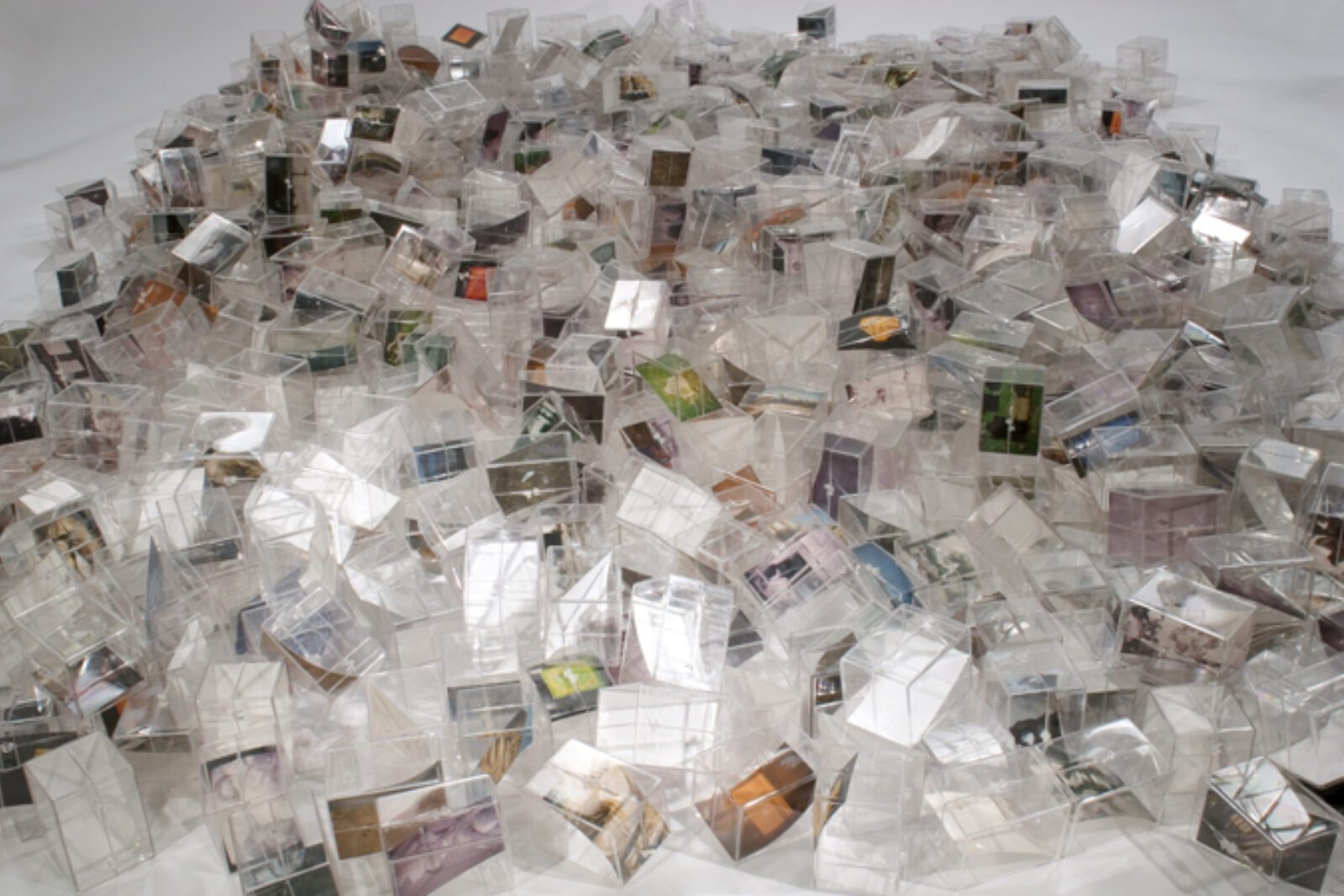















featured gallery for December 2002
Materials at Hand
We approached this project with an eye towards artwork and artists who seemed to have a shared aesthetic with aspects of American folk art. Several of the artists we gravitated towards creatively use found objects like clothing and advertisements and non-traditional art materials such as toys and decorative plastic flowers, rubber hose and medical charts to form their work. The artists have manipulated objects by disassembling and recycling materials as well as transforming meaning through organization and context. Traditionally American folk art is both utilitarian and decorative, and often tells a story, much the way that the artworks we have chosen function.
Both Valerie Caris and Robert Blanchon utilize clothing to comment on their medical experiences. Caris' constructed "Vestments" originate from medical charts that we imagine to be her own. In that sense, the paper dress becomes a cloak, that rather than concealing information, instead both exhibits and contains facts related to her physical condition. The highly personal charts record a process of tracking medical data, and Caris has designed the piece so that the chart is exposed to the viewer while a silky red lining protects the wearer's skin.
Blanchon also presents objects that function as personal records in his untitled work constructed of several tiny plastic boxes containing photographs of seascapes and tombstones and the discolored shirt of "Stain." The works seem to discuss a before and after, the crisp white shirt with the brown stain in its lower left corner and the photos of living trees and rolling waves juxtaposed against gravestones. Both artists manage through their work to provide the viewer with a remnant of history, not entirely knowable but evocative and personal.
James Simmonds and Clifford Smith both recycle materials to create their respective woven spirit baskets and mandalas. Simmonds chooses t-shirts and oxygen tubes from friends and acquaintances who are living with HIV or have died from AIDS and reformats these materials into "Spirit baskets." Clifford Smith creates brightly colored mandalas from raw plastic. For both of these self-taught artists, the meditative process in creating the work is of particular importance. Smith finds the creation of his work helps him focus daily on spiritual life and Simmonds' relates to his Sioux ancestry by practicing a craft taught to him by his grandmother. These artists completely transform the shape and content of raw materials into objects with new meaning.
Collage and assemblage are techniques often used in the work of mainstream and folk art artists. Rubin Gonzalez uses everyday objects and transforms them by manipulating their context and environment. He creates a series of small but crowded stages, akin to altars or memory boxes. The positioning of diverse objects like plastic butterflies and action figures is deliberate. The work addresses consumerism, religion and landscape. Fred Weston also considers consumer products and the idea of purity in "Blue Bathroom Blues." How many products does someone need to be clean? The careful layering of product labels and cool blue rectangles soothes and distracts the viewer from the manufacturing excess.
Our initial choices for this project were made based on aesthetic relationships and a shared visual language with American folk art. Like many mainstream and folk artists, these six artists seem concerned with craft traditions, popular culture and personal identity and have developed unique ways to communicate their visions.
